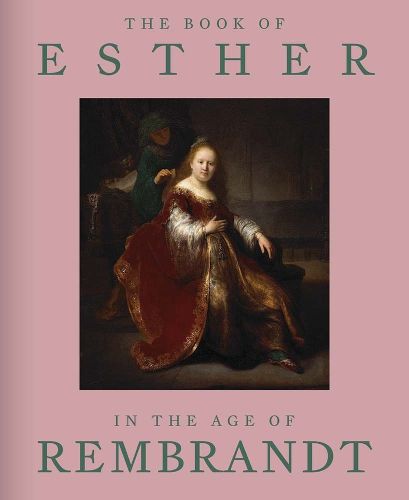Readings Newsletter
Become a Readings Member to make your shopping experience even easier.
Sign in or sign up for free!
You’re not far away from qualifying for FREE standard shipping within Australia
You’ve qualified for FREE standard shipping within Australia
The cart is loading…






An exploration of how the biblical heroine Queen Esther, a symbol of resilience and a figure of immense popularity, was portrayed in seventeenth-century Dutch art
In the age of Rembrandt van Rijn, the biblical Book of Esther was a popular source of inspiration for diverse communities in the Netherlands, both Jewish and Christian. Traditionally, the Esther story is read annually on the Jewish holiday of Purim. For immigrant Jewish communities living with new freedom in more tolerant Amsterdam, celebrating Purim-notably through finely produced Esther scrolls and theater productions-became a meaningful expression of Jewish culture. For the Dutch, Queen Esther's heroism came to represent their emerging nation's identity. Rembrandt and his contemporaries depicted essential scenes of Esther's story in paintings, prints, drawings, and decorative arts.
Examining how Esther was represented in art and popular culture in Rembrandt's time, this beautifully illustrated volume includes essays that discuss the visual culture and ceremonial art of Purim and examine the queen's status as a heroine in seventeenth-century Netherlands. A postscript reveals Esther's continued appeal through a close look at work by contemporary American artist Fred Wilson, who reimagines the biblical heroine as the abolitionist Harriet Tubman.
Published in association with the Jewish Museum, New York, and the North Carolina Museum of Art, Raleigh
Exhibition Schedule:
Jewish Museum, New York
(March 7-August 10, 2025)
North Carolina Museum of Art, Raleigh
(September 20, 2025-March 8, 2026)
Isabella Stewart Gardner Museum, Boston
(July 28, 2026-January 10, 2027)
$9.00 standard shipping within Australia
FREE standard shipping within Australia for orders over $100.00
Express & International shipping calculated at checkout
An exploration of how the biblical heroine Queen Esther, a symbol of resilience and a figure of immense popularity, was portrayed in seventeenth-century Dutch art
In the age of Rembrandt van Rijn, the biblical Book of Esther was a popular source of inspiration for diverse communities in the Netherlands, both Jewish and Christian. Traditionally, the Esther story is read annually on the Jewish holiday of Purim. For immigrant Jewish communities living with new freedom in more tolerant Amsterdam, celebrating Purim-notably through finely produced Esther scrolls and theater productions-became a meaningful expression of Jewish culture. For the Dutch, Queen Esther's heroism came to represent their emerging nation's identity. Rembrandt and his contemporaries depicted essential scenes of Esther's story in paintings, prints, drawings, and decorative arts.
Examining how Esther was represented in art and popular culture in Rembrandt's time, this beautifully illustrated volume includes essays that discuss the visual culture and ceremonial art of Purim and examine the queen's status as a heroine in seventeenth-century Netherlands. A postscript reveals Esther's continued appeal through a close look at work by contemporary American artist Fred Wilson, who reimagines the biblical heroine as the abolitionist Harriet Tubman.
Published in association with the Jewish Museum, New York, and the North Carolina Museum of Art, Raleigh
Exhibition Schedule:
Jewish Museum, New York
(March 7-August 10, 2025)
North Carolina Museum of Art, Raleigh
(September 20, 2025-March 8, 2026)
Isabella Stewart Gardner Museum, Boston
(July 28, 2026-January 10, 2027)